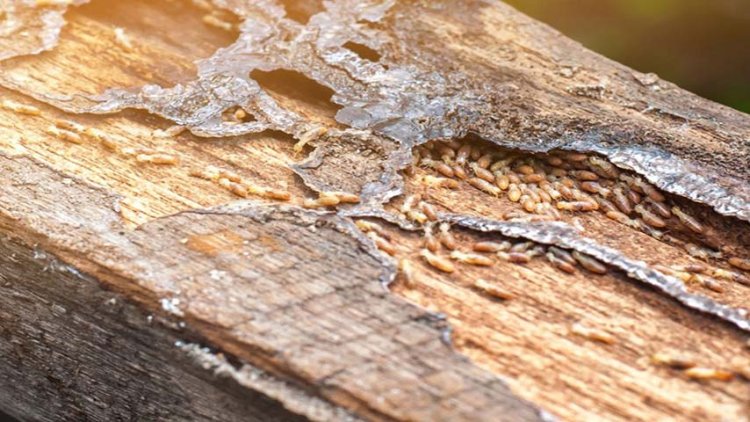Termite Damage Repair Contractor A Comprehensive Guide
Share this Post to earn Money ( Upto ₹100 per 1000 Views )

Termite damage is a serious concern for homeowners, particularly in areas where these pests are prevalent. Termites can cause significant structural damage, compromising the integrity of your home and potentially leading to costly repairs if not addressed promptly. This guide explores the role of a termite damage repair contractor, how to choose the right one, and the essential steps involved in repairing termite damage.
Understanding Termite Damage
Termites are small insects that feed on cellulose, a component found in wood and other plant materials. While they play a role in breaking down organic matter in the environment, when they infest a home, they can cause extensive damage. Termite damage often goes unnoticed until significant structural issues arise, as these pests typically work silently and from within the wood.
Common Signs of Termite Infestation:
Mud Tubes: These are pencil-sized tubes made of soil, wood, and saliva that termites use to travel between their nest and food source.
Swarmers: Winged termites that leave the colony to form new ones, often seen in the spring.
Wood Damage: Hollow-sounding wood or wood that is easily damaged with a screwdriver can indicate termite activity.
Frass: Termite droppings, which resemble sawdust or coffee grounds, are often found near infested wood.
The Role of a Termite Damage Repair Contractor
A termite damage repair contractor specializes in assessing, repairing, and preventing damage caused by termites. Their role encompasses several key responsibilities:
Inspection and Assessment: The contractor will conduct a thorough inspection to determine the extent of the damage and identify the type of termites involved. This step is crucial for developing an effective repair plan.
Repair and Restoration: Based on the assessment, the contractor will perform necessary repairs. This may involve replacing damaged wood, reinforcing structural components, and addressing any aesthetic concerns.
Prevention: To prevent future infestations, the contractor may recommend and implement treatments or modifications to the property, such as installing barriers or improving drainage.
Choosing the Right Termite Damage Repair Contractor
Selecting the right contractor is essential for ensuring quality repairs and avoiding future issues. Here are some factors to consider:
Experience and Expertise: Look for contractors with extensive experience in termite damage repair. Check their qualifications and ask for examples of previous work.
Licensing and Insurance: Ensure that the contractor is licensed and insured. This protects you from liability in case of accidents and ensures the contractor adheres to industry standards.
Reputation: Research the contractor's reputation by reading reviews and asking for references. A reputable contractor will have positive feedback from previous clients.
Detailed Estimates: Obtain detailed estimates from multiple contractors. This helps you understand the scope of work, costs involved, and compare pricing.
The Repair Process
The repair process for termite damage involves several steps, each crucial for restoring the structural integrity of your home:
Inspection and Diagnosis: A comprehensive inspection is the first step. The contractor will identify all affected areas, including hidden damage that may not be immediately visible.
Termite Treatment: Before repairs can begin, the termite infestation must be addressed. The contractor will use appropriate treatments, such as chemical barriers or baiting systems, to eliminate the pests.
Repair and Restoration: Once the infestation is under control, the contractor will repair the damage. This typically involves:
Replacing Damaged Wood: Any wood that is significantly damaged will need to be replaced. This includes structural components like beams and joists, as well as non-structural elements such as trim and cabinetry.
Reinforcing Structures: In some cases, additional reinforcement may be necessary to ensure the repaired areas can withstand future stresses.
Aesthetic Restoration: After structural repairs, the contractor will address any cosmetic issues. This may involve painting, staining, or refinishing surfaces to match the rest of the home.
Prevention Measures: To prevent future termite infestations, the contractor may recommend various measures, such as improving ventilation, reducing moisture levels, and treating the soil around the foundation with termiticides.
Cost of Termite Damage Repair
The cost of repairing termite damage can vary widely depending on several factors:
Extent of Damage: The more extensive the damage, the higher the cost of repairs. Hidden damage can also increase costs as it may require additional work.
Type of Termites: Different types of termites may require different treatment methods, affecting overall costs.
Location: Repair costs can vary based on your geographic location and the local cost of labor and materials.
Contractor Rates: Different contractors may have varying rates based on their experience, expertise, and the complexity of the job.
It is essential to get multiple estimates and understand what is included in the cost to make an informed decision.
Preventing Future Termite Infestations
Preventing future termite infestations is crucial for protecting your home and avoiding repeat repairs. Here are some preventive measures:
Regular Inspections: Schedule regular termite inspections to catch any signs of infestation early.
Moisture Control: Termites are attracted to moisture, so it’s important to address any leaks or water issues in and around your home.
Wood Treatment: Treating wood with termite-resistant chemicals can help protect it from future infestations.
Soil Barriers: Installing physical barriers or treating the soil around your home can create a deterrent for termites.
Conclusion
A termite damage repair contractor plays a vital role in addressing the damage caused by these destructive pests. By understanding their responsibilities, choosing the right contractor, and following a structured repair process, you can ensure that your home is restored to its original condition and protected from future infestations. Remember that timely intervention and prevention are key to maintaining the structural integrity of your home and avoiding costly repairs down the line.

 itsmoose
itsmoose 












